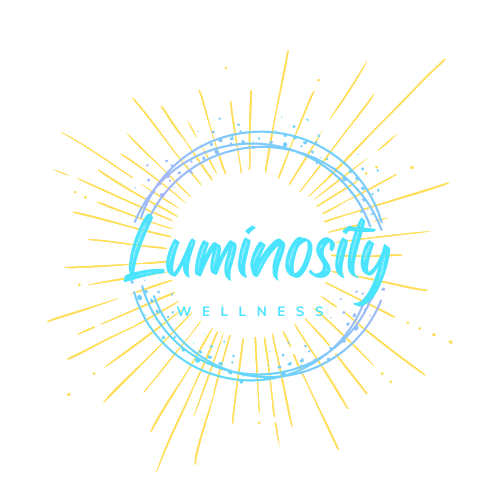In the quest for effective pain management, many individuals are turning to alternative therapies that harness the power of light. Red light therapy, also known as photobiomodulation, has gained significant attention for its potential in alleviating pain and reducing stress. In this blog post, we will explore three key mechanisms by which red light therapy works to manage pain, while also discussing the role of frequency in optimizing pain relief. Additionally, we will address common myths and objections that may hinder individuals from experiencing the full benefits of this innovative therapy.
Mitochondrial Stimulation and Cellular Energy Production: At the heart of red light therapy’s pain management capabilities lies its ability to stimulate cellular energy production. When exposed to specific wavelengths of red and near-infrared light, mitochondria, the powerhouses of our cells, absorb photons and convert them into cellular energy known as adenosine triphosphate (ATP). This increase in ATP production fuels various cellular functions, including the repair and regeneration of tissues.
By promoting mitochondrial stimulation, red light therapy enhances cellular metabolism and accelerates the healing process. This mechanism has shown promising results in managing chronic pain conditions such as arthritis, fibromyalgia, and musculoskeletal injuries. Through improved energy production, red light therapy assists in reducing inflammation, enhancing tissue repair, and relieving pain.
Neurotransmitter Modulation and Pain Signaling: Another essential mechanism through which red light therapy manages pain is by modulating neurotransmitters and pain signaling pathways. Research suggests that red light therapy can influence the release of endogenous opioids, such as endorphins, which are our body’s natural painkillers. This release of endorphins helps to alleviate pain, promote relaxation, and improve mood.
Furthermore, red light therapy has demonstrated the ability to inhibit the production of pro-inflammatory cytokines, which play a crucial role in the initiation and maintenance of pain. By reducing the levels of these cytokines, red light therapy helps to dampen pain signals, providing relief for individuals suffering from chronic pain conditions.
Improved Circulation and Reduced Inflammation: Optimal blood circulation is vital for pain management and healing. Red light therapy has shown the ability to improve microcirculation by enhancing the formation of new capillaries, increasing blood flow, and oxygenating tissues. This improved circulation aids in the delivery of essential nutrients and removal of metabolic waste products, thus facilitating the healing process.
Additionally, red light therapy has been found to reduce inflammation, a common source of pain. By modulating immune responses and reducing the production of inflammatory mediators, it helps to alleviate pain associated with inflammatory conditions such as arthritis, tendonitis, and bursitis. Through its anti-inflammatory properties, red light therapy can provide relief and promote a healthier state within the body.
While the mechanism of action for red light therapy is primarily driven by specific wavelengths, the frequency at which treatments are administered can also influence pain management outcomes. This refers to the number of therapy sessions and the duration between each session. Consistency and regularity are crucial in maximizing the benefits of red light therapy.
To achieve the best results, it is recommended to follow a consistent treatment schedule tailored to individual needs. Frequency can vary depending on the severity of the condition and the desired outcomes. Starting with more frequent sessions, such as three to five times per week, can help jumpstart the healing process. As symptoms improve, the frequency can be gradually reduced to a maintenance level, typically one to three sessions per week.
Despite the growing body of evidence supporting the effectiveness of red light therapy for pain management, some myths and objections may prevent individuals from experiencing its full potential. Let’s address a few common concerns:
- “It’s just a placebo effect“: Red light therapy has been extensively studied, and its mechanisms of action are based on scientific principles. The tangible physiological changes observed in the body, such as improved tissue repair and reduced inflammation, demonstrate that red light therapy goes beyond a placebo effect.
- “It’s not backed by enough research“: While research on red light therapy continues to expand, numerous studies have already demonstrated its efficacy in managing pain. By keeping up with reputable scientific journals and seeking guidance from qualified health practitioners, individuals can stay informed about the latest findings.
- “It’s too expensive“: While red light therapy devices were once limited to clinics and professional settings, the market now offers affordable home devices that provide convenient access to this therapy. Consider the long-term benefits and potential reduction in healthcare costs associated with managing chronic pain effectively.
Red light therapy offers a non-invasive and drug-free approach to pain management, harnessing the power of light to stimulate cellular energy production, modulate neurotransmitters, improve circulation, and reduce inflammation. By understanding the key mechanisms and embracing the appropriate treatment regimen, individuals can unlock the full potential of red light therapy in their journey towards effective pain management. Dispelling common myths and objections can pave the way for a more open-minded approach to this innovative therapy, leading to improved well-being and a brighter future free from pain.
If incorporating red light therapy into your routine is something you would like to try, whether in our office or your own home, be sure to give our office a call today!
